The Prevalence Odds Ratio is not an approximate measure of the Risk Ratio it is a paremter on its own that can be used in crosssectional studies as a measure of the association between exposureRather the odds is threefold greater Interpretation of an OR must be in terms of odds, notRisk factor for the disease • Less than 10 indicates that the odds of exposure among casepatients are lower than the odds of exposure among controls The exposure might be a protective factor against the disease The magnitude of the odds ratio is called the "strength of the association" The further away an odds ratio is

Definition And Calculation Of Odds Ratio Relative Risk Stomp On Step1
Odds ratio vs risk ratio epidemiology
Odds ratio vs risk ratio epidemiology-There are 2 main measures of association commonly used in epidemiology the risk ratio/rate ratio (relative risk) and the odds ratio The former is calculated for study designs that collect data on incidence cohorts and RCTs The latter is calculated for study designs that use prevalent cases crosssectional studies and casecontrol studiesRisk ratios, odds ratios, and hazard ratios are three common, but often misused, statistical measures in clinical research In this paper, the authors dissect what each of these terms define, and provide examples from the medical literature to illustrate each of these statistical measures Finally, the correct and incorrect methods to use these measures are summarized




Definition And Calculation Of Odds Ratio Relative Risk Stomp On Step1
In our example above, p wine and p no_wine were 0009 and 0012 respectively, so the odds ratio was a good approximation of the relative risk OR = 0752 and RR = 075 If the risks were 08 and 09, the odds ratio and relative risk will be 2 very different numbers OR = 044 and RR = 0 Relative risk vs Odds ratioAbstract This paper argues that the use of the odds ratio parameter in epidemiology needs to be considered with a view to the specific study design and the types of exposure and disease data at hand Frequently, the odds ratio measure is being used instead of the risk ratio or the incidenceproportion ratio in cohort studies or as an estimatePerspective of Relative Differences (Ratios) vs Absolute Differences Relative risk comparisons and risk differences provide two different perspectives on the same information Relative risk, ie, risk ratios, rate ratios, and odds ratios, provide a measure of the strength of the association between a factor and a disease or outcome
Odds Ratio = (odds of disease in exposed) / (odds of disease in the nonexposed) Always the measure of association for casecontrol studies For rare diseases (or diseases with long latency periods) the OR can be an approximate measure to the RR (relative risk)Risk Ratio vs Odds Ratio Whereas RR can be interpreted in a straightforward way, OR can not A RR of 3 means the risk of an outcome is increased threefold A RR of 05 means the risk is cut in half But an OR of 3 doesn't mean the risk is threefold;The relative risk and the odds ratio are measures of association between exposure status and disease outcome in a population Relative risk In epidemiology, relative risk (RR) can give us insights in how much more likely an exposed group is to develop a certain disease in comparison to a nonexposed group
Odds ratio vs relative risk?It means that the odds of a case having had exposure #1 are 15 times the odds of its having the baseline exposure This is not the same as being 15 times as probable odds are not the same as probability (odds of 21 against means a probability of $\frac{1}{3}$) So it comes down to what you mean by 'likely'Risk vs odds The terms 'risk' and 'odds' are often used interchangeably but they actually have quite different implications and are calculated in different ways Odds is a concept that is very familiar to gamblers It is a ratio of probability that a particular event will occur and can be any number between zero and infinity




Measures Of Effect Relative Risks Odds Ratios Risk Difference And Number Needed To Treat Kidney International




Pdf When To Use The Odds Ratio Or The Relative Risk
9222 Measures of relative effect the risk ratio and odds ratio Measures of relative effect express the outcome in one group relative to that in the other The risk ratio (or relative risk) is the ratio of the risk of an event in the two groups, whereas the odds ratio is the ratio of the odds of an event (see Box 92a)For both measures a value of 1 indicates that the estimated effects•This is well known in the epidemiology literature, but not well (enough) know among additive vs multiplicative interaction (1978) OR = Odds Ratio (95% Confidence Interval) <compare to 1 RR = Risk Ratio (95% Confidence Interval) <compare to 1 RD = Risk Difference (95% Confidence Interval) <compare to 0 Outcome (Depression) Prior2) Relative Risk and Odds Ratio for the nonobese Relative Risk and Odds Ratio for the obese 3) Overall, you can see that decreasing the baseline incidence will decrease the odds ratio (300 in those who are nonobese versus 129 in those who are obese) Obviously, these results run counter
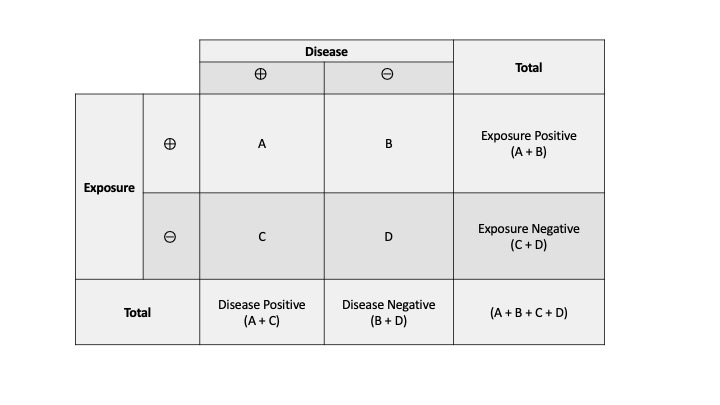



Measures Of Association Stats Medbullets Step 1




A Beginner S Guide To Interpreting Odds Ratios Confidence Intervals And P Values Students 4 Best Evidence
Odds Ratio and Relative Risk are examined in epidemiological context Odds ratio can mislead if a Common Event is studied, since it can exaggerate effectsAbout Press Copyright Contact us Creators Advertise Developers Terms Privacy Policy &Note that in clinical epidemiology, probability and odds are often used to express a physician's opinion about the likelihood that an event will occur, rather than necessarily the absolute probability or odds that an event will occur This emphasis on quantifying a physician's opinion will again become more evident when we come to discuss Bayes'




Attributable Risk And Odds Ratio Online Medical Library
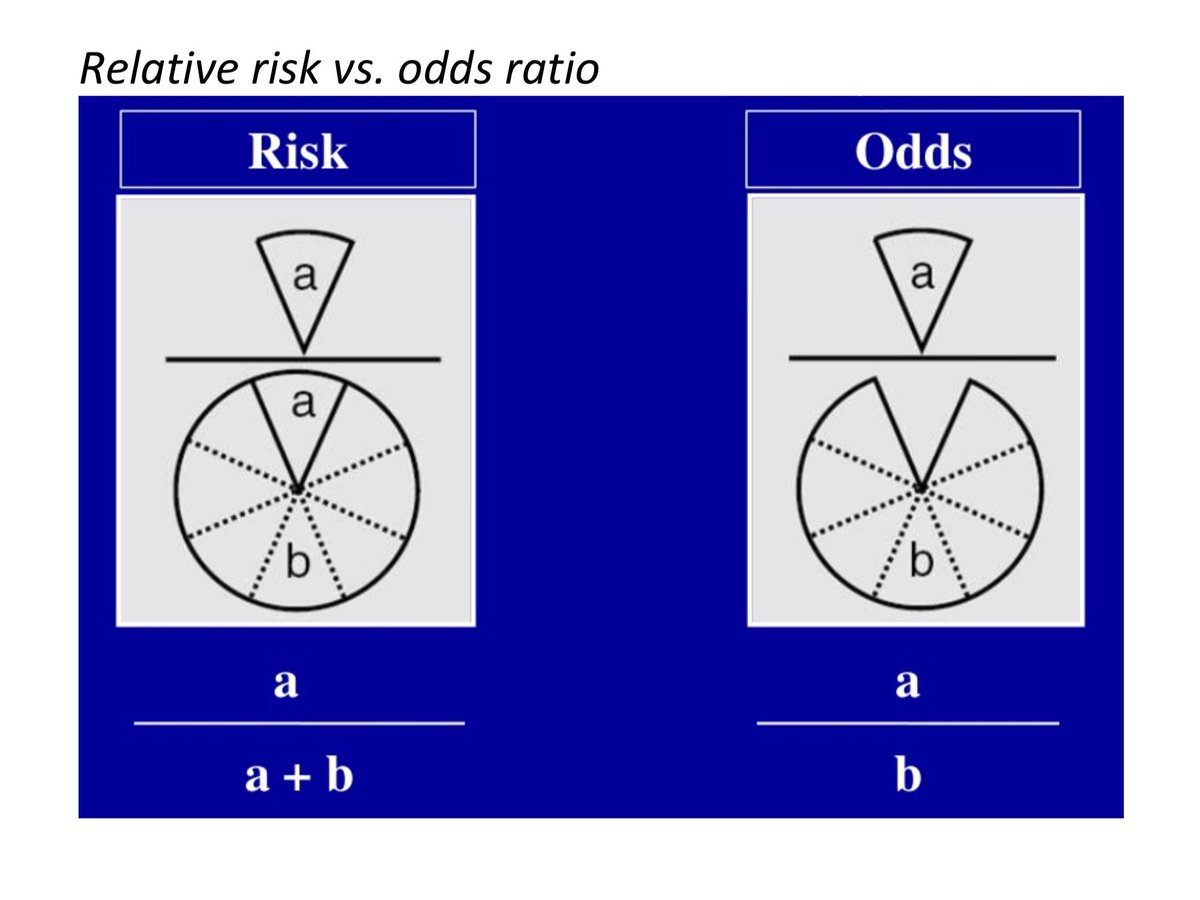



最新 Odds Ratio Vs Relative Risk Usmle ただの悪魔の画像
The relative risk (RR) and the odds ratio (OR) are the two most widely used measures of association in epidemiology The direct computation ofINTRODUCTION Odds ratio (OR) and risk ratio (RR) are two commonly used measures of association reported in research studies In crosssectional studies, the odds ratio is also referred to as the prevalence odds ratio (POR) when prevalent cases are included, and, instead of the RR, the prevalence ratio (PR) is calculatedAbsolute risk, attributable risk, attributable risk percent, population attributable risk percent, relative risk, odds, odds ratio, and others The concept and method of calculation are explained for each of these in simple terms and with the help of examples The interpretation of each is presented in plain English rather than in technical




Converting An Odds Ratio To A Range Of Plausible Relative Risks For Better Communication Of Research Findings The Bmj




What Is An Odds Ratio And How Do I Interpret It Critical Appraisal
The prevalence odds ratio The prevalence odds ratio (POR) is calculated in the same manner as the odds ratio The prevalence ratio The prevalence ratio (PR) is analogous to the risk ratio (RR) of cohort studies The denominators for both ratios are fixed populations –The relative risk (also known as risk ratio RR) is the ratio of risk of an event in one group (eg, exposed group) versus the risk of the event in the other group (eg, nonexposed group) The odds ratio (OR) is the ratio of odds of an event in one groupSafety How works Test new features Press Copyright Contact us Creators
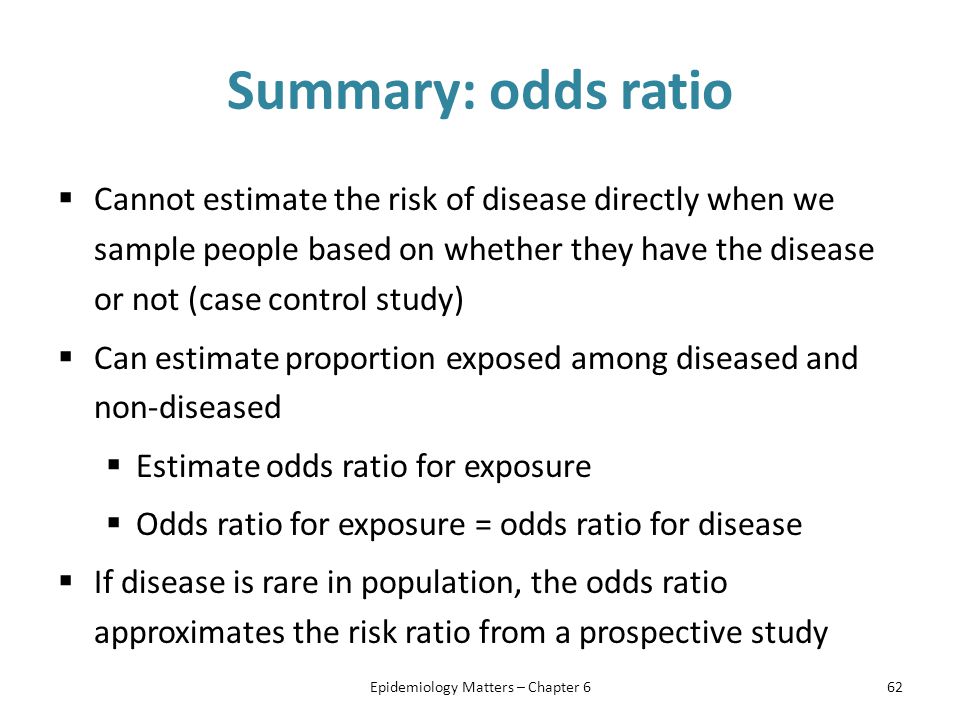



Are Exposures Associated With Disease Ppt Video Online Download
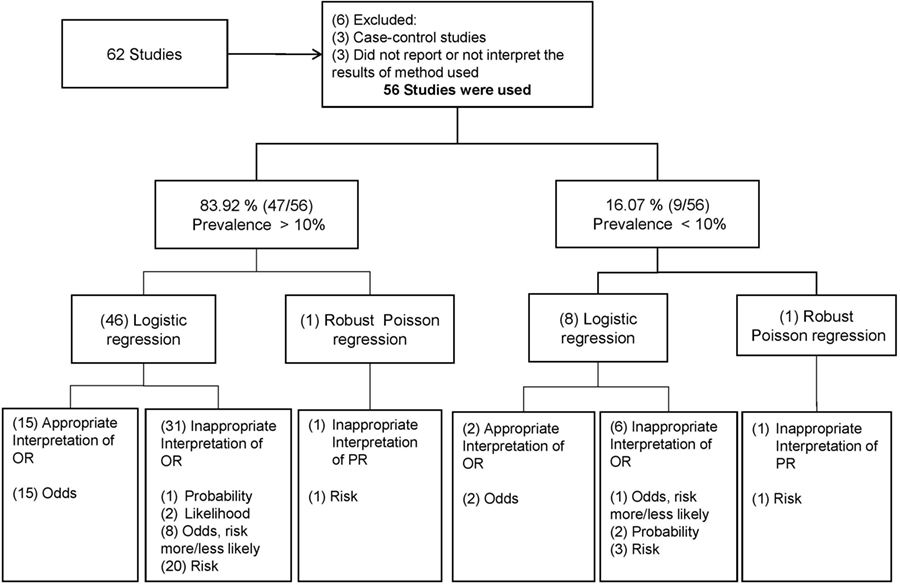



Frontiers Odds Ratio Or Prevalence Ratio An Overview Of Reported Statistical Methods And Appropriateness Of Interpretations In Cross Sectional Studies With Dichotomous Outcomes In Veterinary Medicine Veterinary Science
Examples of measures of association include risk ratio (relative risk), rate ratio, odds ratio, and proportionate mortality ratio Risk ratio Definition of risk ratio A risk ratio (RR), also called relative risk, compares the risk of a health event (disease, injury, risk factor, or death) among one group with the risk among another group• Odds Both prevalence and incidence proportions may be addressed in terms of odds Let p represent the incidence proportion or prevalence proportion of disease and o represent the odds of disease Thus, odds o = p / (1 – p) • Reporting To report a risk or rate "per m," simply multiply it by m For example, an incidenceBy applying the concepts learned in this course to current public health problems and issues, students will understand the practice of epidemiology as it relates to real life and makes for a better appreciation of public health programs and policies This course explores public health issues like cardiovascular and infectious diseases – both




Epi546 Block I Lecture 3 Frequency How Do




Relative And Absolute Risk Osmosis
Definition The Odds Ratio is a measure of association which compares the odds of disease of those exposed to the odds of disease those unexposed Formulae OR = (odds of disease in exposed) / (odds of disease in the nonexposed) Example I often think food poisoning is a good scenario to consider when interpretting ORs Imagine a group of friends went out to• To identify measures of association and risk as they are used in epidemiology • To interpret relative risk and odds ratios and be familiar with their calculation using 2x2 tables, and • To interpret the following measures of risk differences attributable risk, population attributable risk, and population attributable risk percentThe odds ratio Slide 40 Slide 41 Slide 42 Slide 43 The odds ratio here Interpretation of the odds ratio The rare disease assumption The odds ratio vs the risk ratio Odds ratios in crosssectional and cohort studies Example, wrinkle study Interpreting ORs when the outcome is common Interpreting ORs when the outcome is common



Relative Risk Ratios And Odds Ratios




Epidemiology Calculating Relative Risk Youtube
Incidence Proportion (Risk, Cumulative Incidence) Incidence Rate (Incidence Density, Average Hazard, PersonTime Rate) Prevalence Odds 2 32 Measures of Association between an exposure and outcome (disease) Absolute Measures of AssociationsOdds ratios (OR) are commonly reported in the medical literature as the measure of association between exposure and outcome However, it is relative risk that people more intuitively understand as a measure of association Relative risk can be directly determined in a cohort study by calculating a rPercent increase = (Risk Ratio lower bound – 1) x 100 Percent decrease = (1 – Risk Ratio upper bound) x 100 It's worth stating again when comparing two proportions close to 1 or 0, the risk ratio is usually a better summary than the raw difference Odds Ratios We now turn to odds ratios as yet another way to summarize a 2 x 2 table




Observational Studies In Epidemiology Error Bias Confounding Msc




There Are Ten Important Calculations In Epidemiology Odds Ratio Prevalence Relative Risk Incidence Control Event Rate Cer Study Health Disease Disease
Relative measures of effect are risk ratio (ie the ratio between two incidence proportions), incidence rate ratio (the ratio between two incidence rates), and OR (the ratio between two odds) The risk difference is an absolute measure of effect (ie the risk of the outcome in exposed individuals minus the risk of the same outcome in unexposed)Summary Classical epidemiology is the study of the distribution and determinants of disease in populations There are two main types of epidemiological studies observational and experimental Observational studies are categorized into descriptive and analytical studies Descriptive studies (case reports, case series, crosssectional studies, ecological studies) consider the relationshipChapter 13 Relative Risk, Odds Ratio, and Attributable Risk study guide by bwlecka includes 14 questions covering vocabulary, terms and more Quizlet flashcards, activities and games help you improve your grades




Madhu Pai Md Phd Su Twitter Incidence Prevalence Odds Risk Rate Relative Risk Excess Risk Risk Reduction Hazard Confused When I Was A Phd Student Ucberkeleysph I Worked On A Handout




Cph Exam Review Epidemiology Ppt Download
The probability that an event will occur is the fraction of times you expect to see that event in many trials Probabilities always range between 0 and 1 The odds are defined as the probability that the event will occur divided by the probability that the event will not occur If the probability of an event occurring is Y, then the probability of the event not occurring is 1YOne of the most commonly observational study designs employed in veterinary is the crosssectional study with binary outcomes To measure an association with exposure, the use of prevalence ratios (PR) or odds ratios (OR) are possible In human epidemiology, much has been discussed about the use of the OR exclusively for case–control studies and some authorsRisk (Retrospective) Menu location Analysis_Clinical Epidemiology_Risk (Retrospective) This function calculates odds ratios and population attributable risk with confidence intervals You can examine the likelihood of an outcome such as disease in relation to an exposure such as a suspected risk or protection factor



Risk Ratio Vs Odds Ratio Hunter 19 Notes And Things




1 The Odds Ratio Relative Odds In A Case Control Study We Do Not Know The Incidence In The Exposed Population Or The Incidence In The Nonexposed Population Ppt Download
Pretend there is a drawing with one winner and 10,000 people entered The odds of winning are 1/9,999 () and the probability of winning is 1/10,000 () In this case, odds and probability are essentially identical Relative Risk (RR) &BioEpi540W 6 Applications of Probability in Epidemiology Page 11 of 17 b Odds(comparison of two complementary (opposite) outcomes) In words, the odds of an event E is the chances of the event occurring in comparison toEpidemiology is the study of the distribution and determinants of healthrelated states or events (including disease), and the application of this study to the control of diseases and other health problems World Health Organization (WHO)




Relative And Absolute Risk Osmosis
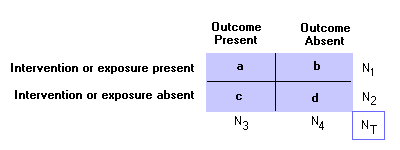



Epidemiology Glossary Physical Diagnosis Skills University Of Washington School Of Medicine
The relative risk and the odds ratio are measures of association between exposure status and disease outcome in a population Relative risk In epidemiology, relative risk (RR) can give us insights in how much more likely an exposed group is to develop a certain disease in comparison to a nonexposed group Once we know the exposure and disease status of a research population,The basic difference is that the odds ratio is a ratio of two odds (yep, it's that obvious) whereas the relative risk is a ratio of two probabilities (The relative risk is also called the risk ratio) Let's look at an example Relative Risk/Risk Ratio Suppose you have a school that wants to test out a new tutoring programAs explained in the Motivating Example section, the relative risk is usually better than the odds ratio for understanding the relation between risk and some variable such as radiation or a new drug That section also explains that if the rare disease assumption holds, the odds ratio is a good approximation to relative risk and that it has some advantages over relative risk




Il Estimating Odds Ratios And Relative Risks An Chegg Com




Measures Of Effect Relative Risks Odds Ratios Risk Difference And Number Needed To Treat Kidney International
Odds ratio vs relative risk Odds ratios and relative risks are interpreted in much the same way and if and are much less than and then the odds ratio will be almost the same as the relative risk In some sense the relative risk is a more intuitive measure of effect size Note that the choice is only for prospective studies were the distinctionERIC at the UNC CH Department of Epidemiology Medical Center CaseControl Studies exposure is a risk factor for the health outcome under study Case the odds ratio approximates a risk ratio or rate ratio However, this is not always the case, and care should be taken to interpret odds ratios appropriately




Statistics Part 13 Measuring Association Between Categorical Data Relative Risk Odds Ratio Attributable Risk Logistic Regression Data Lab Bangladesh




Epidemiology Kept Simple Chapter 8 Measures Of Association




What Is An Odds Ratio And How Do I Interpret It Critical Appraisal
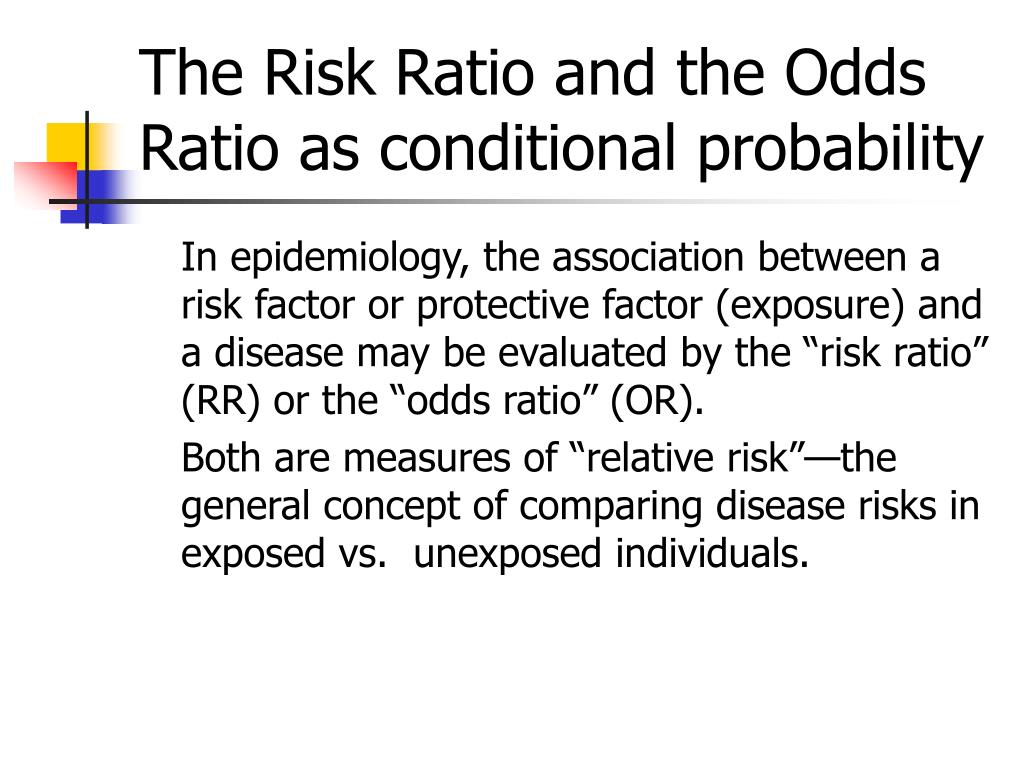



Ppt Conditional Probability Powerpoint Presentation Free Download Id




Pdf Fundamental Epidemiology Terminology And Measures It Really Is All In The Name Semantic Scholar




Definition And Calculation Of Odds Ratio Relative Risk Stomp On Step1




Measures Of Risk In Epidemiology Made Easy Youtube




A Beginner S Guide To Interpreting Odds Ratios Confidence Intervals And P Values Students 4 Best Evidence




Pdf When To Use The Odds Ratio Or The Relative Risk Semantic Scholar




Risk Differences And Rate Differences




Epidemiology Calculating Attributable Risk Youtube




Odds Ratio Wikipedia




Pdf Distributional Interaction Interpretational Problems When Using Incidence Odds Ratios To Assess Interaction




Definition And Calculation Of Odds Ratio Relative Risk Stomp On Step1




Odds Ratios And Risk Ratios Youtube




Pdf Measures Of Effect Relative Risks Odds Ratios Risk Difference And Number Needed To Treat




Number Needed To Harm Wikipedia



Case Control Study Wikipedia




印刷可能 Odds Vs Risk ただの悪魔の画像




Moving Beyond Odds Ratios Estimating And Presenting Absolute Risk Differences And Risk Ratios Ashley H Schempf Phd Mch Epidemiology Training Course Ppt Download




Odds Ratios Are Far From Portable A Call To Use Realistic Models For Effect Variation In Meta Analysis Journal Of Clinical Epidemiology



Epidemiology Stepwards




Calculate Relative Risk With 95 Confidence Intervals




How To Interpret And Use A Relative Risk And An Odds Ratio Youtube




Pdf When To Use The Odds Ratio Or The Relative Risk Semantic Scholar
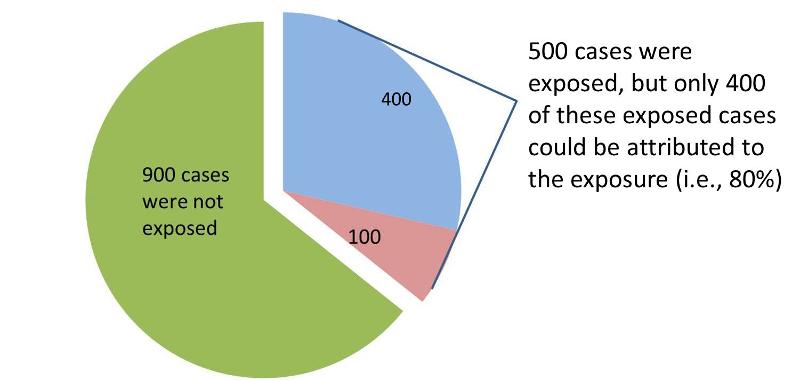



Measures Of Association



3




Odds Ratio Wikipedia




Pdf Do Case Control Studies Always Estimate Odds Ratios



Silo Tips




Pdf On The Reporting Of Odds Ratios And Risk Ratios




Numerators Denominators And Populations At Risk Health Knowledge




Pdf Distributional Interaction Interpretational Problems When Using Incidence Odds Ratios To Assess Interaction




Relative Risk Odds Ratios Youtube
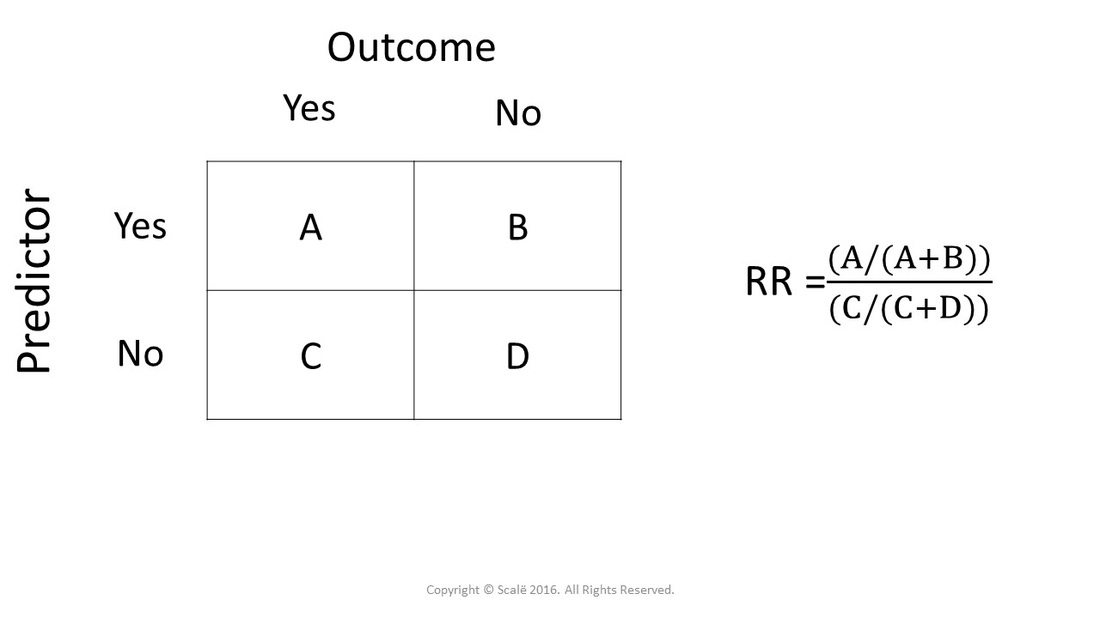



Calculate Relative Risk With 95 Confidence Intervals
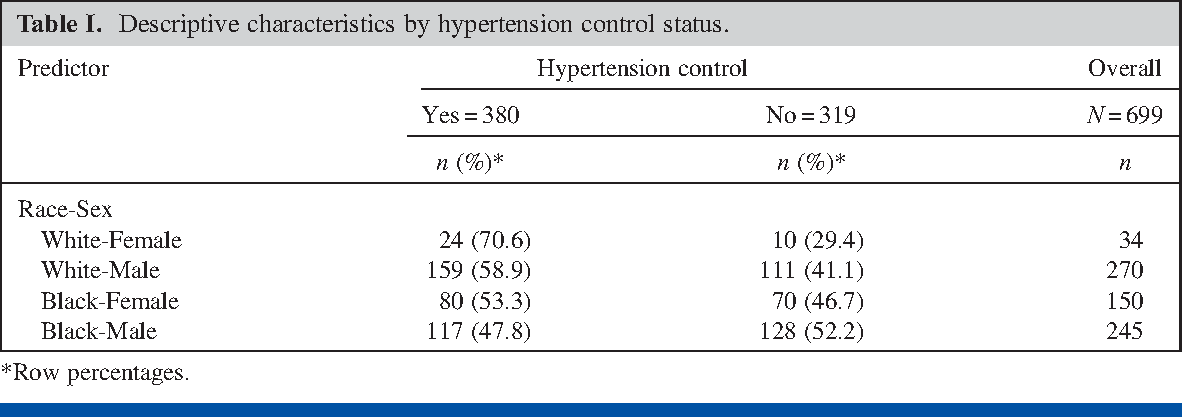



Pdf Prevalence Odds Ratio Versus Prevalence Ratio Choice Comes With Consequences Semantic Scholar



Silo Tips




Pdf When To Use The Odds Ratio Or The Relative Risk Semantic Scholar




The Difference Between Relative Risk And Odds Ratios The Analysis Factor




Cureus What S The Risk Differentiating Risk Ratios Odds Ratios And Hazard Ratios




Solved Compare And Contrast The Three Major Study Designs Chegg Com




Pdf Real World Occupational Epidemiology Part 1 Odds Ratios Relative Risk And Asbestosis Eric Beh Academia Edu




Odds Ratio Relative Risk Risk Difference Statistics Tutorial 30 Marinstatslectures Youtube




Calculating The Risk Ratio Odds Ratio And Risk Difference In A Randomised Controlled Trial Youtube




Chapter 6 Choosing Effect Measures And Computing Estimates Of Effect Cochrane Training



Definition And Calculation Of Odds Ratio Relative Risk Stomp On Step1




Measures In Epidemiology Epidemiology Recap The Study Of




Epidemiology Risk Factors Prognosis Peripheral Vascular Disease Basic Clinical Perspectives




Definition And Calculation Of Odds Ratio Relative Risk Stomp On Step1




How To Calculate Odds Ratio And Relative Risk In Excel Statology




Relative Risk Wikipedia



6 7 8 9 10 11 12 13 14 15 16 17 18 19 21 22 23 24 25 26 27 28 29 30 Review Incidence And Prevalence Are Formally Defined On Slide 7 Birth And Death Rates Are Also Estimates Of Absolute Risk Risk Factors Are Identified By Determining



Plos Neglected Tropical Diseases Epidemiology Of Strongyloides Stercoralis Infection In Bolivian Patients At High Risk Of Complications




Usmle Epidemiology Biostats Pdf Accuracy And Precision Mode Statistics



Understanding Measures Of Association Or Risk Odds Ratio Communitymedicine4all



Silo Tips




Frontiers Odds Ratio Or Prevalence Ratio An Overview Of Reported Statistical Methods And Appropriateness Of Interpretations In Cross Sectional Studies With Dichotomous Outcomes In Veterinary Medicine Veterinary Science




Epidemiology Odds Ratio Or Bean Around The World



1




Odds Vs Relative Risk ただの悪魔の画像




Cureus What S The Risk Differentiating Risk Ratios Odds Ratios And Hazard Ratios




Box 9 2 A Calculation Of Rr Or And Rd



Odds




Pdf Real World Occupational Epidemiology Part 1 Odds Ratios Relative Risk And Asbestosis
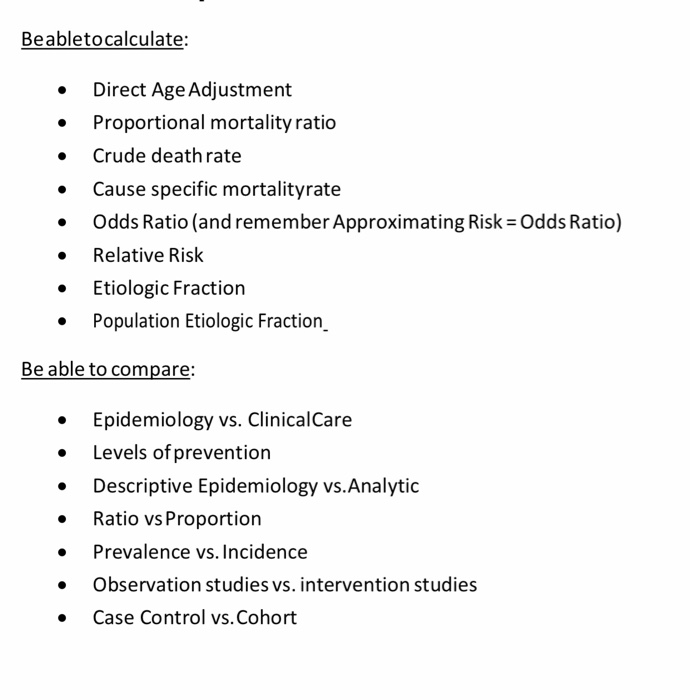



Beabletocalculate Direct Age Adjustment Chegg Com




Relative Risk And Odds Ratio




When Can Odds Ratios Mislead The Bmj




Measures In Epidemiology Panithee Thammawijaya Bureau Of Epidemiology




Relative Risk Rr Versus Odds Basics In Epidemiology Facebook




Glossary Of Research Terminology



Hazard Ratio Formula




Calculate Relative Risk With 95 Confidence Intervals
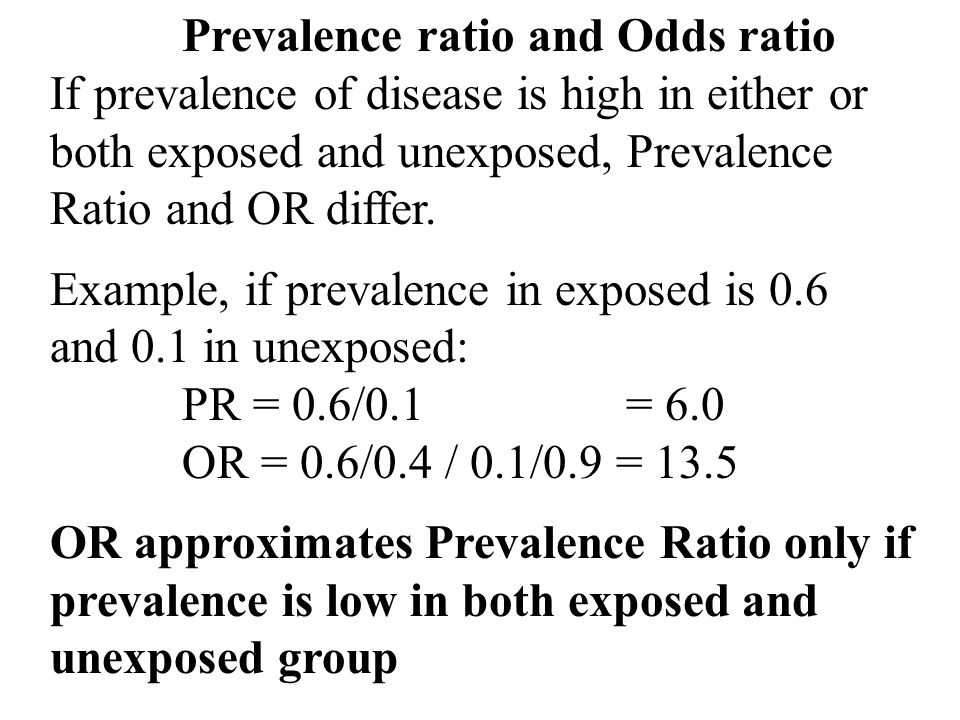



Measures Of Disease Association Ppt Download



Silo Tips



Journal Emwa Org




Using Odds Ratio In Case Control Studies Youtube
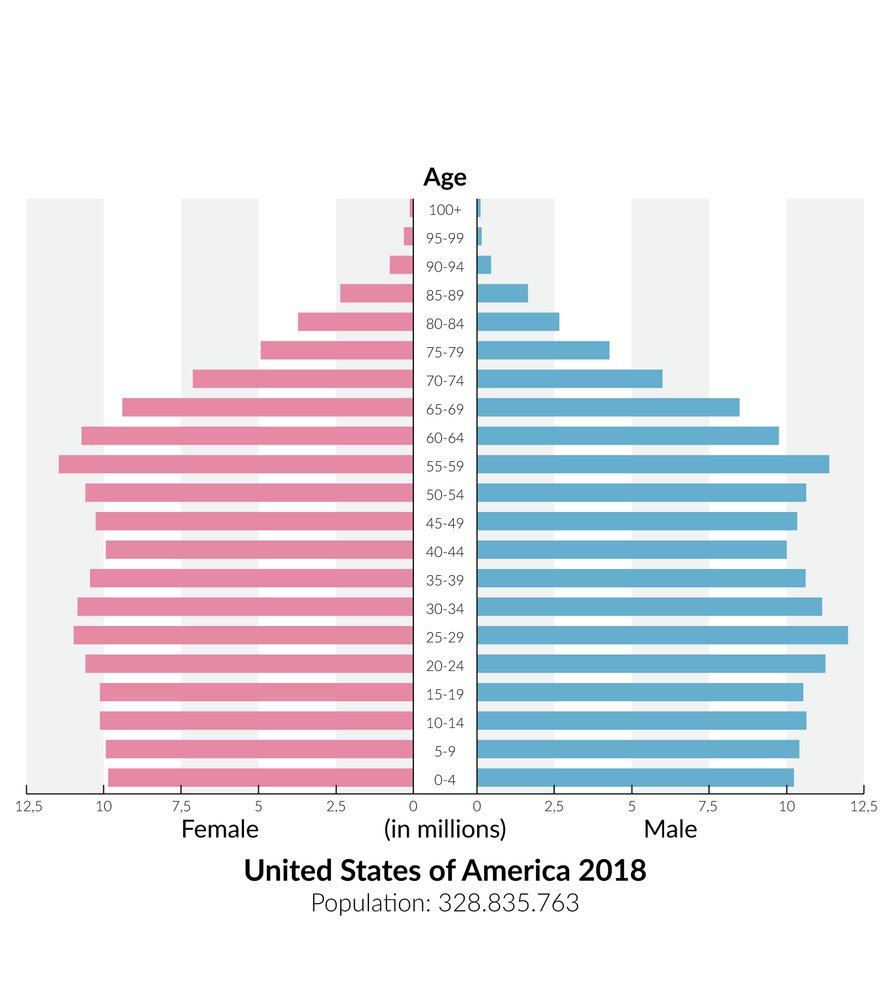



Epidemiology Knowledge Amboss



Absolute Risk Vs Relative Risk Vs Odds Ratio Pp Made Easy On Vimeo




Tutorial About Hazard Ratios Students 4 Best Evidence




How To Calculate An Odds Ratio Youtube



0 件のコメント:
コメントを投稿